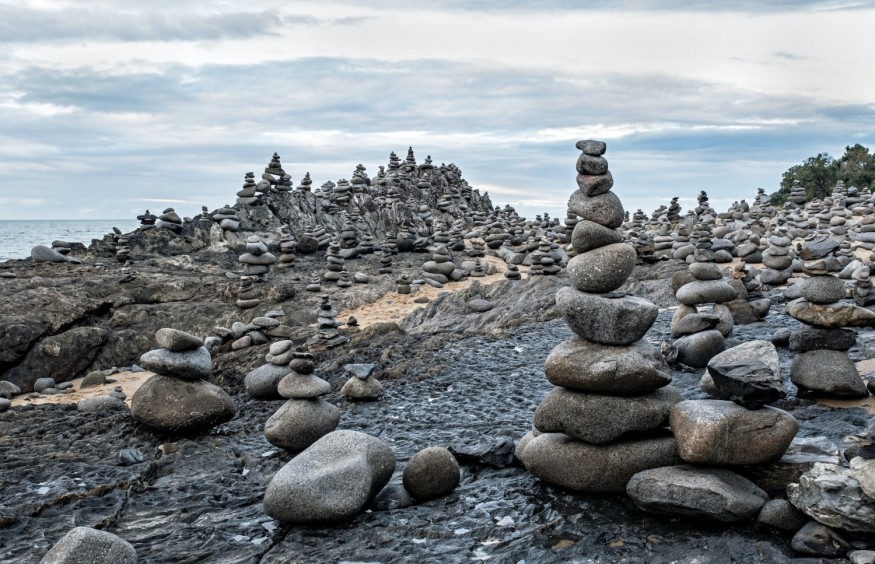When following a trail up a mountain, cave, or hill, rock towers are typical sights. Recently, though, the National Park has asked hikers to stop doing anything illegal, including knocking down or building rock towers.
Although the typical view from the top of a trail is worth the effort, IFLScience reports that the summit of a hiking trail is also most of the time covered in lots and lots of stacked rocks, rock towers, or cairns. Cairn is derived from a Scottish Gaelic word that means "heap of stones."
Rock Towers or Cairns vs. GPS

These types of rock cairns are frequently erected along well-known trails such as the Camino de Santiago to guide hikers on particularly perplexing routes. But recently, cairns have started to appear everywhere on hiking trails, frequently in groups and typically by specific landmarks or rest areas.
Cairns can help people who are traveling in similar directions feel more connected to one another and can even guide those who have a poor sense of direction. The US National Park Service contends that the ornamental ones might confuse visitors who are unfamiliar with the area and frequently lead them in the wrong direction. Additionally, creating cairns goes against the idea of leaving no trace, which is a fundamental aspect of being outside or in nature. Bearfoot Theory also agrees with and emphasized this concept in their feature article.
A small animal living beneath a rock may have been accidentally disturbed when the rock was moved from one location to another. Moving stones can also exacerbate soil erosion or ruin the delicate microhabitats that support plant and animal life. Additionally, shifting a rock to increase the height of a cairn could make the entire structure collapse, defeating the purpose.
On the other hand, proponents of cairns contend that they are useful because they direct hikers and stop them from wandering off course and damaging protected areas. However, the US National Parks Department asserts that trekkers are becoming baffled by the unauthorized cairns because their number has grown so significantly. Those planning to do lots of hiking should always carry wayfinding tools such as GPS or maps to navigate, rather than depending on rock towers or cairns.
Bates Cairn
It is believed that Waldron Bates, the principal author of an island path map released in 1896, is responsible for the creation of cairns. He wrote a manual to set guidelines for how things should be handled because he was passionate about keeping hiking trails in good condition. In addition, he established the Bates cairn construction method, which is very different from the contemporary simple stacks.
Why It is Illegal
The National Parks Service advises against tampering with, constructing upon, or enhancing existing rock cairns or towers. Kicking over a rock tower is also unadvisable. To further clarify, moving the rocks could be considered to be vandalism, which is prohibited by law, IFLScience reports.
Related article : New Mysteries Unlocked as Hell Hole in California Explored by Cavers
© 2025 NatureWorldNews.com All rights reserved. Do not reproduce without permission.





